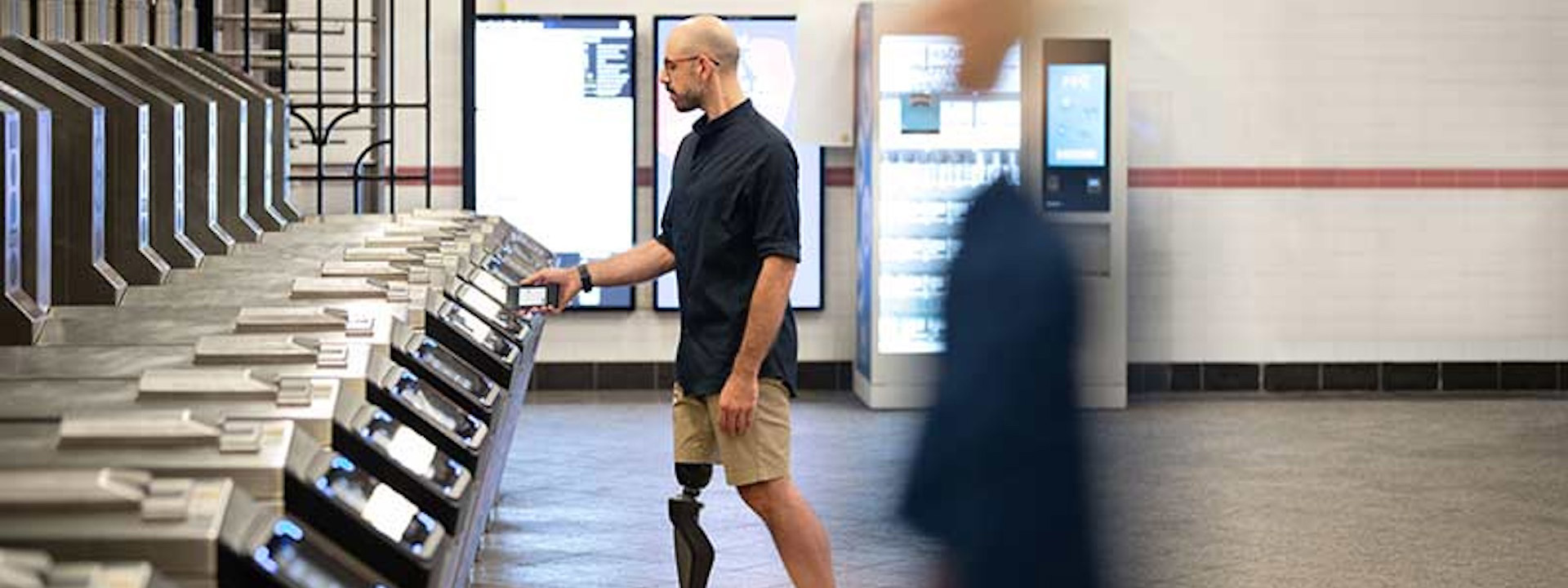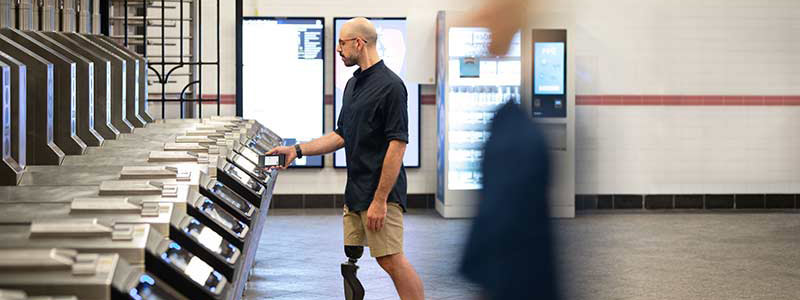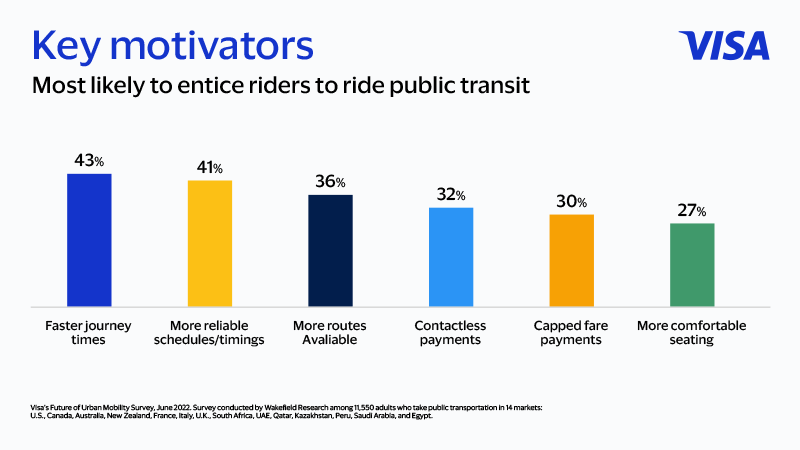

In cities across the globe, people are venturing out again after a more than two-year hiatus. Public transit has always been a vital part of how people get to work or school, run errands, and travel to leisure activities. But the pandemic has pushed many riders to challenge the status quo when it comes to how they pay their fares.
The speed, security, and ease of digital payments have helped shift global consumers’ payment preferences. Visa’s second Future of Urban Mobility Survey found that 91 percent of those surveyed either strongly or somewhat expect contactless payment options to be available on public transit. Nearly half (45 percent) of respondents prefer to pay for transit using contactless payments.¹
Among employed riders, 62 percent said they take public transit at least three times a week, and 28 percent ride five times a week or more.¹ Just under half (42 percent) of those surveyed plan to use transit more often over the next 12 months.¹ As ridership continues to ramp up, it will be important that paying to ride is secure and seamless.
Including more riders with a more dynamic fare experience
Payment options such as fare capping represent an important opportunity for transit operators to serve as many riders as possible. Fare capping limits how much a rider pays for their total rides in a day, week, or month, eliminating the need to tie up funds on a monthly pass or transit-dedicated card. Among survey respondents, 61 percent said that capped fares would encourage them to take public transit more often than a non-fare capped system.¹
43 percent of riders rank faster journey times as a top motivator that would encourage them to use transit more often.¹ Fare capping can help speed up the boarding process by alleviating confusion over how to pay for newer riders.

Keeping it sustainable
Why do riders prefer public transit? Of those surveyed, 88 percent said that sustainability and the environment were a factor in how often they decide to travel by transit, and it was the top reason for more than one in three riders (34 percent).¹
Improving the global transit experience
Transit systems help city residents sustain their livelihoods, connect to services and pursue activities that create a vibrant city life. Visa supports global transit operators to deliver digital tools to draw in more passengers and improve the overall experience. Visa and our transit partners have recently rolled out new projects worldwide, from Thailand to Japan to Mexico and beyond, to enable riders to simply tap their contactless credit, debit, prepaid card, or payment-enabled device, without needing to purchase or load a separate transit card or handle cash while boarding.
View survey results here: Visa's 2022 Future of Urban Mobility.
- Visa’s “Future of Urban Mobility” survey: May 2022 (conducted by Wakefield Research among 11,550 adults who take public transportation in 14 markets: U.S., Canada, Australia, New Zealand, France, Italy, U.K., South Africa, UAE, Qatar, Kazakhstan, Peru, Saudi Arabia and Egypt.